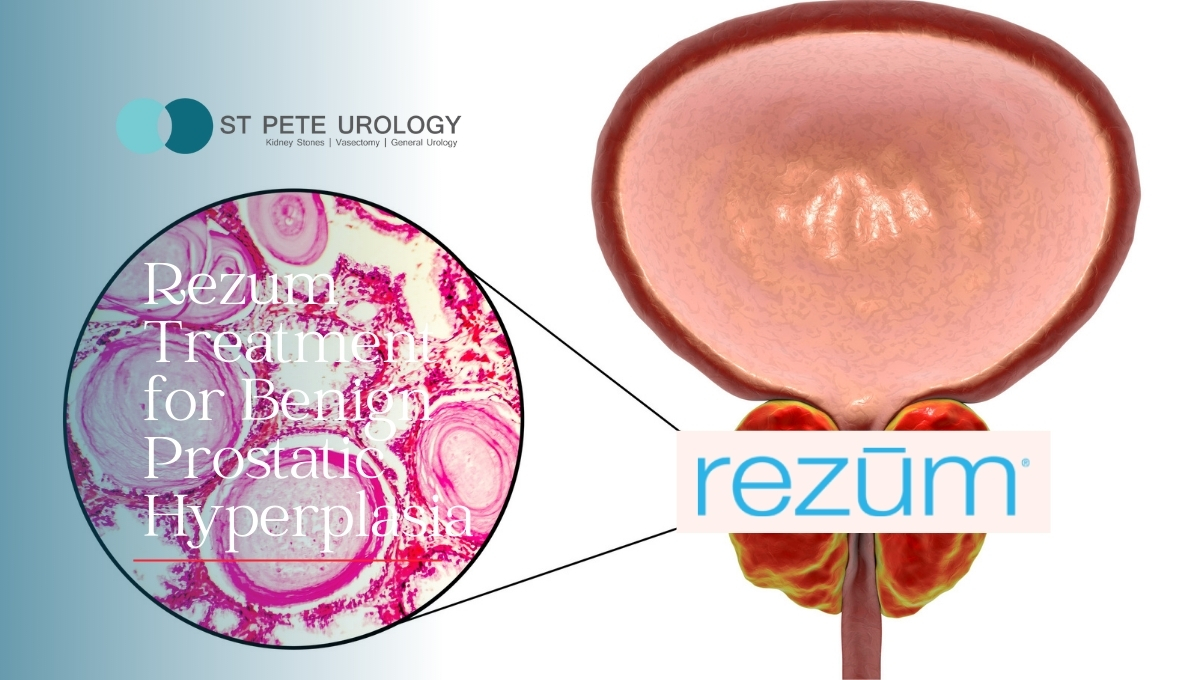Key Takeaways:
- The UroLift technology is a minimally invasive device that staples the lobes of the prostate apart from each other, allowing for a much quicker recovery experience without a catheter.
- The UroLift technology is the only device that does not have the side effect of retrograde ejaculation, making it a viable treatment option for men grappling with BPH.
- St. Pete Urology is a leading urology practice offering state-of-the-art BPH treatment options, including the UroLift technology. Their commitment to delivering the best care to their patients makes them a trustworthy option for pursuing BPH treatment.
Navigating the path of finding the right BPH treatment can be a labyrinthine task. Over the years, advancements have been made in the field, but with each progress comes a new set of challenges. That’s where the UroLift technology steps in. It is a minimally invasive device yoking the future of urology with the demands of the contemporary patient. Spearheading this revolution in BPH treatment is Dr. Reid Graves, a board-certified urologist based in St. Petersburg, FL.
Embracing New Technologies
Dr. Graves, of St. Pete Urology, eloquently elucidates how the UroLift technology is adding a groundbreaking dimension to urology. He says, “There have been new technologies that have recently come out with a device called the UroLift technology, which essentially is a stapling device that staples the lobes of the prostate apart from each other so that the patient can void through their prostate.”
This advanced device, in Dr. Graves’ own words, “is an exciting new advancement in the era of BPH treatment for a couple of reasons.” It’s minimally invasive technology with almost no blood loss. Moreover, patients can even return home without a catheter, dramatically enhancing their recovery experience.
Addressing Troubling Side Effects
Technological triumph is praiseworthy. However, the true gauge of new treatments is its capacity to relieve the side effects that previously afflicted patients. One such side effect, often linked with BPH treatment, is retrograde ejaculation. This occurs when the ejaculate reverses into the bladder during orgasm. It prevents patients from seeing their ejaculate during intercourse, a predicament that disturbs many men.
Fortunately, in the case of the UroLift device, as Dr. Graves informs us, “This new treatment, the UroLift device, is the only device which does not have this side effect.” This revelation solidifies UroLift’s standing as a viable treatment option for men grappling with BPH.
A Brighter Future for BPH Treatment
The advent of UroLift technology highlights the fact that even in a field as intricate as urology, there is always room for innovation. By creating a less invasive treatment option, the field of urology has proven its commitment to patient wellbeing once more.
Looking ahead, it’s clear that UroLift technology is leading the charge in transforming the face of BPH treatment. From its efficacy to the lack of troubling side effects, the device has emerged as a promising solution to an enduring problem.
Trust St. Pete Urology for Top-Notch Treatment
St. Pete Urology, a leading urology practice in St. Petersburg, Florida, continues to be at the epicenter of these advancements, offering state-of-the-art BPH treatment options. These include the groundbreaking UroLift technology, a testament to their commitment to delivering the best care to their patients.
Through the skilled guidance of Dr. Reid Graves, St. Pete Urology is creating a better tomorrow, one patient at a time. So, trust St. Pete Urology to guide you through the web of decisions. Their understanding, expertise, and dedication to patient care set them apart from the rest. This ensures that you receive the most targeted and effective BPH treatment.
References:
- “UroLift Procedure for BPH (Enlarged Prostate) – Overview and Cost.” https://www.urologysanantonio.com/bph-enlarged-prostate/urolift-procedure.
- “Benign Prostatic Hyperplasia (BPH) – Urology Care Foundation.” https://www.urologyhealth.org/urology-a-z/b/benign-prostatic-hyperplasia-(bph).
- “Retrograde ejaculation – Symptoms and causes – Mayo Clinic.” 11 Jan. 2022, https://www.mayoclinic.org/diseases-conditions/retrograde-ejaculation/symptoms-causes/syc-20354890.
Transcription:
Hi, I’m Dr. Reid Graves and I’m a board certified urologist at St. Pete Urology. There have been new technologies that have recently come out with a device called the UroLift technology, which essentially is a stapling device that staples the lobes of the prostate apart from each other so that the patient can void through their prostate. Now this is an exciting new advancement in the era of BPH treatment for a couple of reasons. One, it is extremely minimally invasive with almost no blood loss and patients can even go home without a catheter.
In addition, one of the most troubling side effects for men with treatment of BPH is retrograde ejaculation. This is when the ejaculate goes backwards into the bladder when a patient is having an orgasm and they’re unable to see their ejaculate during intercourse. This is often something that bothers men and this new treatment, the UroLift device, is the only device which does not have this side effect. And so this is something that is a new exciting advancement in this field.




 BPH is the abbreviation for benign prostatic hyperplasia, also called
BPH is the abbreviation for benign prostatic hyperplasia, also called 